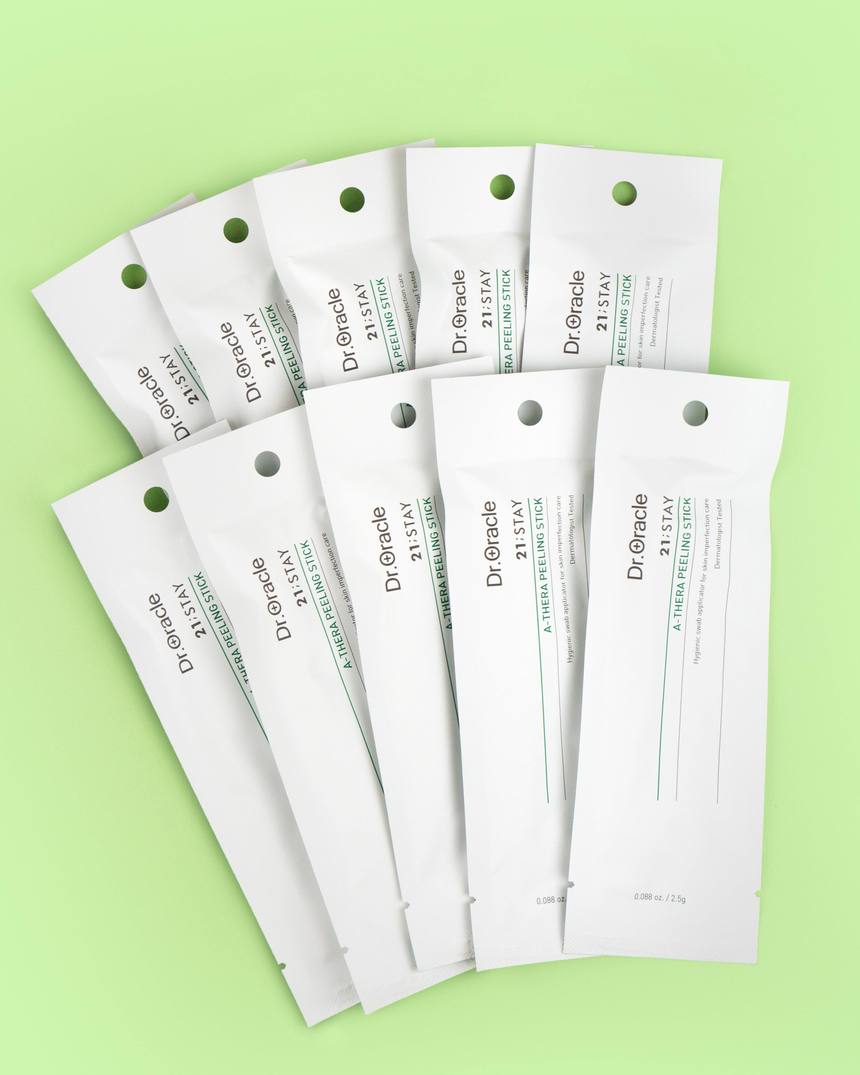Through all our differences in the world, there is one thing almost everyone on this earth deals with. Yup, we’re talking about blackheads. And today we’re specifically talking about how to get rid of them. These are the best Korean products for blackheads.
Sure, you’ve been using those Bioré nose strips and a myriad of scrubs that boast to deep clean your pores so that you’ll never see one black pore again, but it’s time to switch up your acne routine. Korean products can help you get rid of blackheads even better.
Many Korean companies are dedicated to creating products that clear your pores by reducing sebum and tightening pores so your skin literally feels like silk and looks super clear. Below are the best Korean products for blackheads.
The acid: Dr. Oracle A-Thera Tea Tree Peeling Sticks
This acne fighting fiend is about to be your new go-to acne treatment. These oversized cotton swabs are soaked in AHAs and BHAs, which are extremely effective at controlling sebum. It’s a targeted chemical exfoliant spot treatment that deep cleans pores from the inside out. Lactic acid gently scrubs away dead skin cells, while glycolic acid smooths out skin texture. It also contains tea tree extract, lemon extract, and bamboo extract to gently exfoliate without creating any irritation.
The serum: It’s Skin Power 10 Formula – Po (Pore Tightening)
If you want a gentler approach to combatting blackheads, grab this It’s Skin serum. It uses a unique collection of ingredients—like houttuynia cordata—to shrink the appearance of pores (smaller pores means less visible blackheads!) and reduce sebum production.
This serum is great to press into your skin after you’ve used one of the masks specifically made for blackheads (we’ll get to those soon) to help keep everything clean and tight after an intense exfoliating session.
The triple mask: Skinmiso Pore Beauty Nose Pack
You know those few stubborn blackheads that never go away, even after you got that serious facial? This Skinmiso mask will get rid of them in three steps. First, put the “Blackhead & Whitehead Removal” strip over your nose for 10 minutes. It’s filled with tingling natural extracts that soften pores and prepare them for extraction. After you remove it, you’ll see that your blackheads are more prominent. Then, you can use the Skinmiso Comedo Remover or your fingers (make sure their clean!) to extract the blackheads. You’ll notice that the mask makes it really easy to extract your blackheads—no tugging needed!
Once you’ve extracted them, you can then put the Step 2 nose strip on to help calm down any irritation caused by squeezing sebum out of your nose. And just because Skinmiso really wants your skin to be in its best shape, there’s a Sebum, Oil, Pore-Control Essence included in the package that you dab onto your nose when you’re all done to prevent further sebum buildup.
The pore-clearing pads: Neogen Bio-Peel Gauze Peeling Lemon
If you suffer from blackheads but you also have sensitive skin, seek out these exfoliating pads. They’re dual-sided pads soaked in lemon, papaya, and orange extracts that provide both chemical and physical exfoliation. They also use lactic acid—a gentle AHA that effectively exfoliates pores. When used regularly, you’ll see less of those black dots.
The complete overhaul mask: Neogen Canadian Clay Pore Cleanser
Everyone we know who has oily skin and has tried this totally unique Neogen mask says they love it. Here’s why: It transforms from a clay mask into a bubbling foam, and then into a cream cleanser once you froth it up with water. This triple cleansing system gives your pores a serious detox. It reduces oil production and whips pores back into shape. The result is way less visible blackheads and bright skin.
















